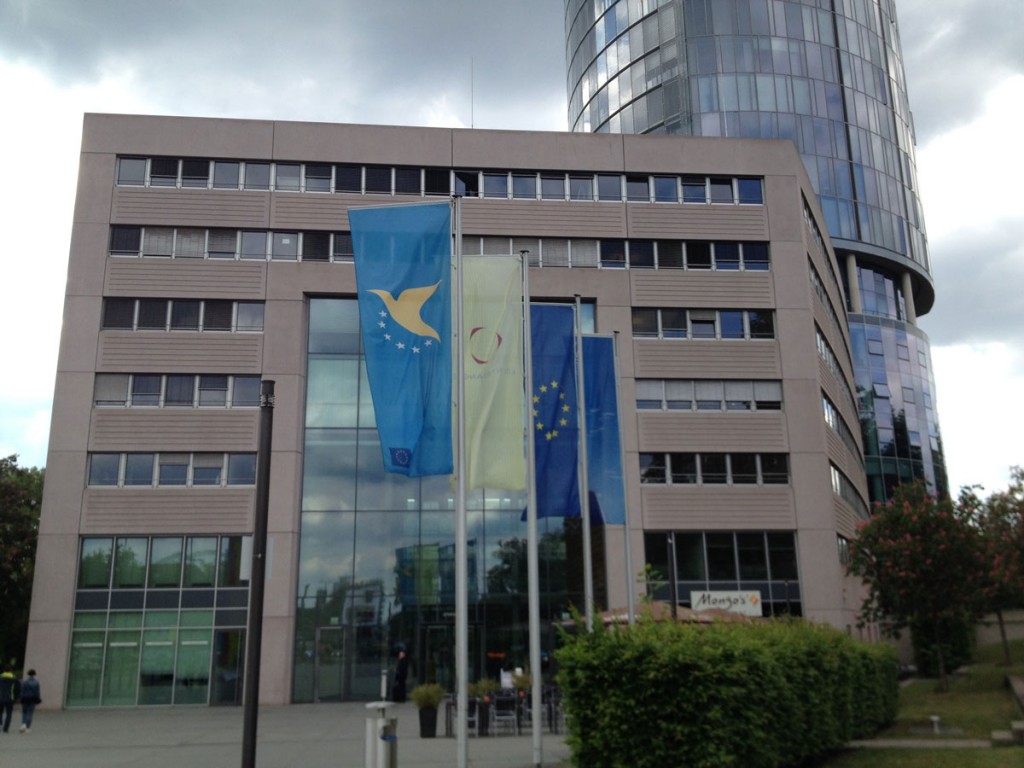
The European Aviation Safety Agency (EASA) met in 2016 at their headquarters in Cologne, Germany to fine tune upcoming regulations regarding the implementation of upset prevention and recovery training (UPRT) in compliance with recommendations made by the International Civil Aviation Organization. APS was honored to have a ‘seat at the table’ as these important pathfinding talks were held.
Representing APS at this third round of meetings of the Loss of Control Prevention and Recovery Training Review Group was Randall Brooks, VP of Training and Business Development. Previous meetings have been attended by Clarke McNeace, APS VP of Flight Operations and Standards during his tenure at APS Europe in the Netherlands.
The review group was comprised of over a dozen UPRT providers, Approved Training Organizations (ATOs), regulators, aircraft manufacturers, industry organizations and subject matter experts from six European countries and the United States. While many of these individuals have been involved in UPRT efforts addressing the threat of Loss of Control In-flight (LOC-I) for many years, others were new to this aspect of training, offering a contrast of experience and fresh eyes to approach upcoming changes.
These changes are a part of ICAO recommendations and changes to pilot licensing calling for UPRT to be included throughout a pilot’s career span to mitigate the threat of LOC-I, currently the greatest cause of fatalities in every sector of aviation. ICAO called for UPRT to better prepare pilots to react appropriately to prevent airplane upset events, and to provide pilots with the skills necessary to effectively recover from a wider range of situations than existing civil licensing does.
EASA made the decision to “fast track” their response to ICAO’s approach to LOC-I, outlined in ICAO document 1001, titled “The Manual on Aeroplane Upset Prevention and Recovery Training”. As the first adopter of some of the new ICAO UPRT protocols, EASA is taking a leadership position in defining and implementing a wide variety of items involving guidance material, alternative means of compliance, and the necessary regulations.
In complying with ICAO guidelines, EASA is outlining how UPRT will be integrated throughout pilot training to include individual type ratings and recurrent training. ICAO has also called for the delivery of on-aircraft UPRT to all pilots prior to Commercial Licensing. While the details of the deliberations are not public at this time, participants divided into two groups to separately discuss issues related to training in Flight Simulation Training Devices and UPRT delivered in aircraft, with both groups coming together to share progress and address areas common to the delivery of UPRT in all types of training platforms.
In being the first to introduce regulated UPRT, EASA must institute necessary mechanisms required to guarantee the standards of quality training programs and instructor qualification which ensure not only that training is conducted safely, but that it is done correctly to eliminate negative training or negative transfer of skills which can create safety risks of their own.
APS salutes the hard work of EASA in facing up to the challenges of introducing mandated UPRT which will serve as a model for many other National Aviation Authorities around the world. As other civil aviation authorities learn from the steps EASA is taking, they will collectively put in place the effective changes in training required to materially reduce the number one threat to air safety: LOC-I.




Comments: